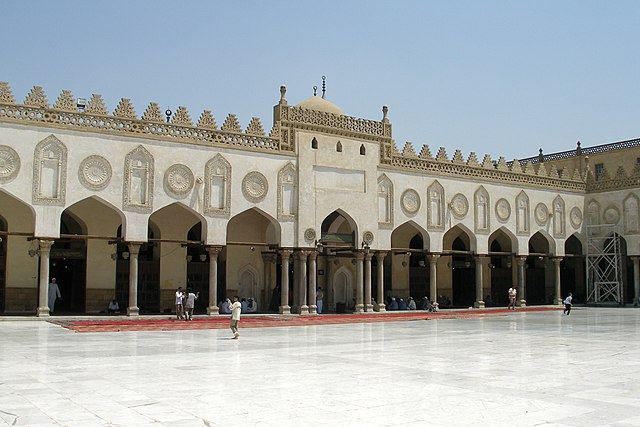Abu Tamim Ma'ad al-Mu'izz li-Din Allah was the fourth Fatimid caliph and the 14th Ismaili imam, reigning from 953 to 975. It was during his caliphate that the center of power of the Fatimid dynasty was moved from Ifriqiya to Egypt. The Fatimids founded the city of Cairo in 969 as the new capital of the Fatimid Caliphate in Egypt.
Gold dinar of al-Mu'izz, minted in Cairo, 973 AD
The Fatimid Caliphate or Fatimid Empire was a caliphate extant from the tenth to the twelfth centuries CE under the rule of the Fatimids, an Isma'ili Shia dynasty. Spanning a large area of North Africa and West Asia, it ranged from the western Mediterranean in the west to the Red Sea in the east. The Fatimids trace their ancestry to the Islamic prophet Muhammad's daughter Fatima and her husband Ali, the first Shia imam. The Fatimids were acknowledged as the rightful imams by different Isma‘ili communities as well as by denominations in many other Muslim lands and adjacent regions. Originating during the Abbasid Caliphate, the Fatimids conquered Ifriqiya and established the city of al-Mahdiyya. The Fatimid dynasty ruled territories across the Mediterranean coast and ultimately made Egypt the center of the caliphate. At its height, the caliphate included—in addition to Egypt—varying areas of the Maghreb, Sicily, the Levant, and the Hejaz.

Fatimid Caliph al-Mahdi Billah receiving an envoy from Simeon I of Bulgaria, Madrid Skylitzes, 12th century.
Fragments of mosaic pavement from the palace of al-Qa'im in al-Mahdiyya (Mahdia), on display at the Mahdia Museum
Al-Azhar Mosque in Cairo, built by the Fatimids between 970 and 972
Architectural fragment from a bathhouse in al-Fustat, 11th century CE (pre-1168 CE). Museum of Islamic Art, Cairo, 12880.





